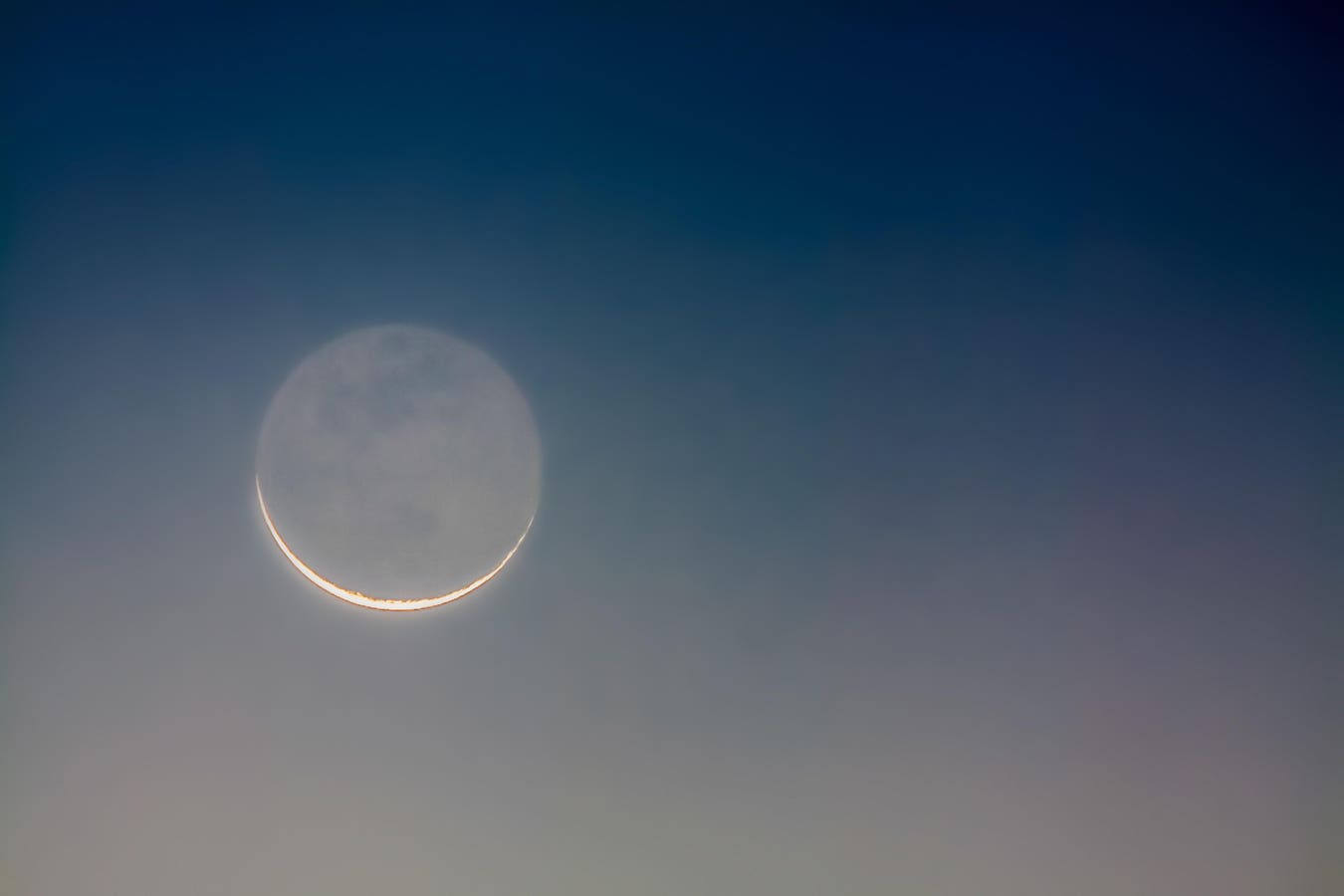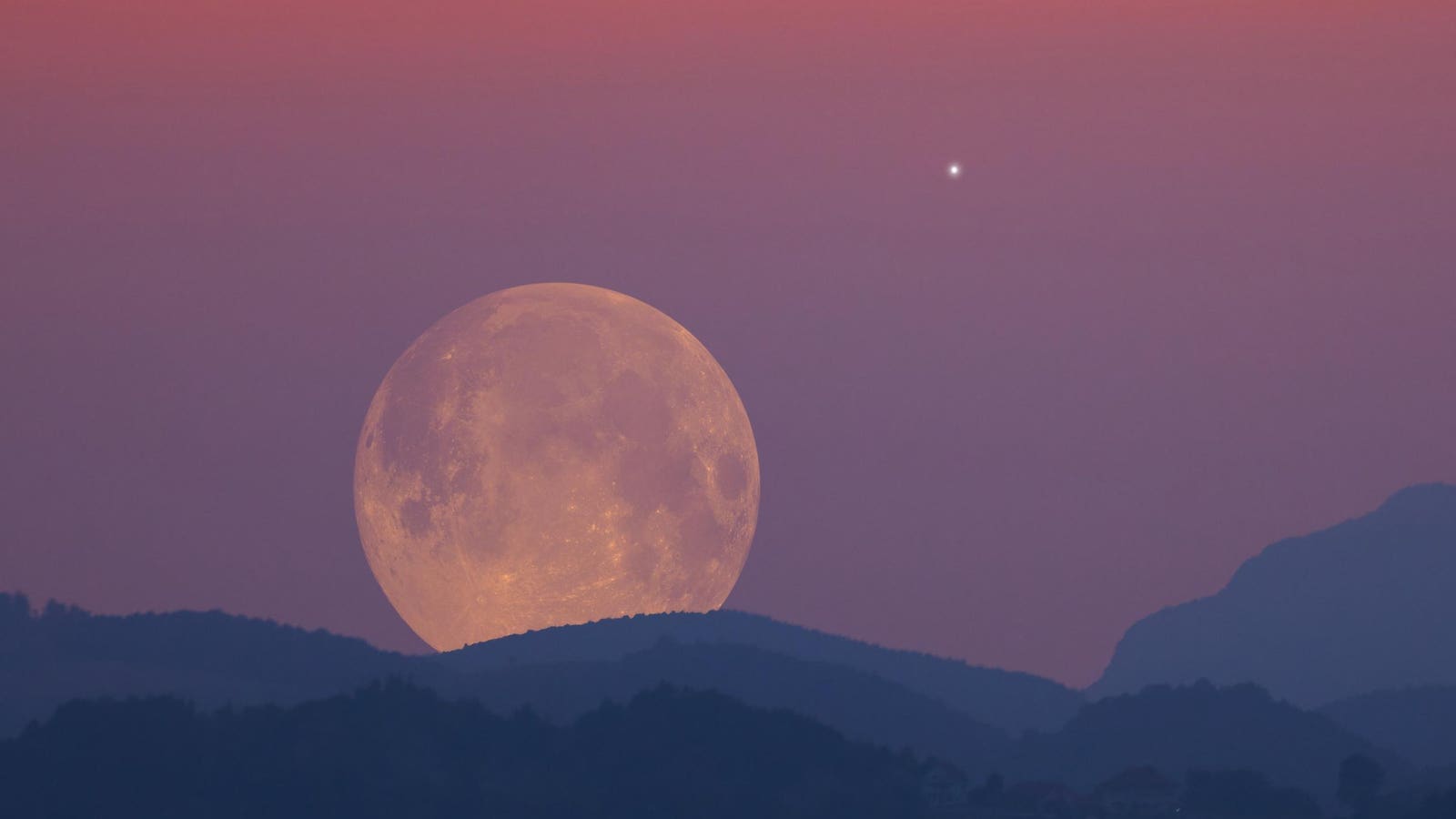Crescent moon showing earthshine at sunrise
When is the new moon? This weekend sees our natural satellite slip between Earth and the sun — something it does every 29 days — as it momentarily becomes a new moon.
That moment will happen at precisely 2:31 p.m. EST on Sunday, Apr. 27, but there’s something slightly different about this new moon — it’s a supermoon. You’ve probably heard the term applied to full moons, but they also happen at the new moon (and, in fact, they can occur at any lunar phase). You won’t see it — a new moon is, by definition, invisible — but Sunday’s new “supermoon” is important. Here’s why — and everything else you might want to know about it.
What Is A Supermoon?
The moon’s orbital path around Earth is slightly elliptical, so each month, there’s a point when it’s farthest away (apogee) and closest (perigee). If a new moon coincides with a perigee, it’s closer to Earth and bigger in the night sky, so it’s also known as a new supermoon. A supermoon is defined as one that is 10% closer than the average distance. Since Sunday’s new moon will, at 2:31 p.m. EST, be 221,917 miles (357,141 kilometers) from Earth (the average distance is 238,900 miles (384,472 kilometers)), it’s the closest new supermoon for 2025. November’s full moon, the “Beaver Moon,” will be the closest full supermoon of 2025.
This is important, of course, because it could mean flooding in coastal areas if winds are strong and rainfall is heavy. A new supermoon causes the strongest king tides of the year because of the combined gravitational effects of both the sun and the moon being on the same side. It could mean spring or king tides, according to EarthSky.
The Moment Of Syzygy
Although the closeness to the Earth makes this new moon special, there is no moment of what astronomers call syzygy — when the sun, moon and Earth align perfectly in a straight line. Technically speaking, it’s always either a waning crescent or a waxing crescent, albeit slight. The only moment of perfect syzygy during a new moon is a total solar eclipse. Last month, on Mar. 29, that almost happened, with a total solar eclipse occurring a few hundred miles above eastern Canada, which saw a 94% partial solar eclipse.
The Next Solar Eclipse
The next solar eclipse will be a partial solar eclipse on Sept. 21, 2025, which will be visible in Antarctica, New Zealand and the Pacific. It will be followed by an annular solar eclipse — also called a “ring of fire” — visible only in a remote region of Antarctica on Feb. 17, 2026. The next total solar eclipse will happen on Aug. 12, 2026, when eastern Greenland, western Iceland and northern Spain experience a short totality of about two minutes.
Wishing you clear skies and wide eyes.








